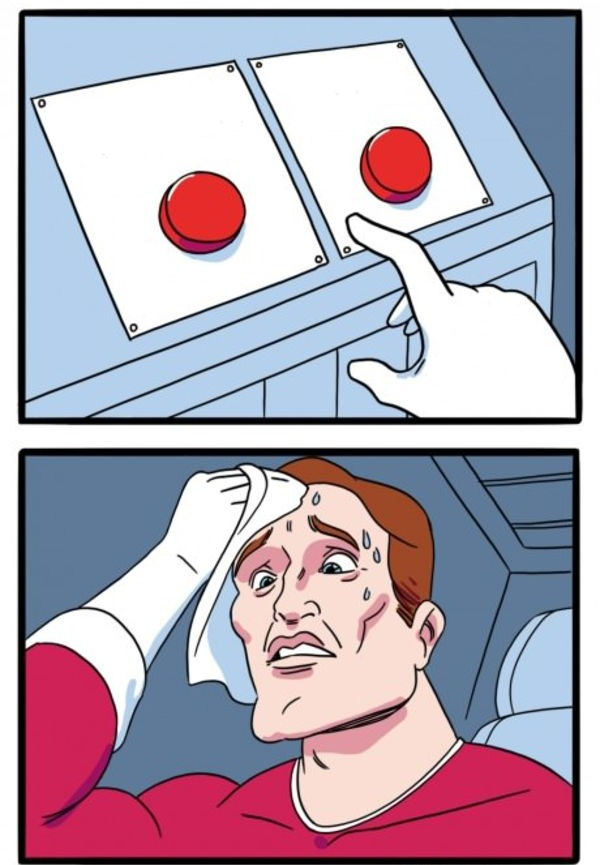The 5 categories of problem-solving
These are the 5 categories reflecting how people operate about problem-solving and communication in business.
Since stepping into my new role, I’ve spent the past few months reflecting deeply on how I want my team to approach problem-solving and communication.
One of the most successful Italian football managers of the last 15 years, once said: “People fall into categories - if you never win, there must be reason.1”
The same applies to how people tackle challenges and communicate in business. There are categories of people and categories of effectiveness.
Below, I’ve outlined what I believe are the 5 categories that reflect how individuals typically operate about problem-solving and communication in business settings.
I am sure people can progress to higher categories with feedback, self-awareness, and a growth mindset, while some might remain stuck in the same category for years.
And unless someone is consciously trying to sabotage themselves, to get demoted or fired for example, I don’t believe one can truly fall back to a lower category.
Category 1: Spotter
This is the basic and first category.
In this category the person flags an issue but offers no additional context or solutions. It’s a reactive behavior, common among entry level.
Example: “The team is unhappy.”
Category 2: Context provider
In the higher category, this person can explain why something matters, offering context but no clear direction forward.
Typical of early career individual contributors (ICs).
Example: “The team is unhappy because their workload doubled after the new project was launched.”
Category 3: Option provider
This person brings a few thoughtful options to the table, showing a bit of ownership and definitely a solutions-oriented mindset.
Typical of experienced ICs or mid-level managers.
Example: “The team is unhappy because overloaded. We could pause project X, delay project Y by two weeks, or reassign project Z to another function.”
Category 4: Decision driver
In this very high category, the person shows strong judgment by proposing a clear path forward, often with an execution plan.
Typical of senior managers or directors.
Example: “To reduce burnout for the team, I propose we pause project X for 30 days. I’ve aligned with leads and stakeholders and drafted the comms. Can I move forward?
Category 5: Owner
In the highest category, the person operates with full autonomy, taking initiative and looping others in proactively. He/She is really an owner.
Typical of senior directors and above (if and when that autonomy is given to them).
Example: “I paused project X, communicated with stakeholders, and reassigned the team. I’ll report impact metrics next Friday.”
Conclusion
These five categories are not about titles, they're about mindset.
A young graduate can operate as a decision driver, while a senior manager can be stuck at the option provider category
No matter where someone starts, the goal is to progress.
If a person wants to grow in a company, he/she needs to move quickly from flagging problems to owning outcomes.
As a leader, I’m focused on helping people level up, because the more owners you have on the team, the less you need to chase alignment, action, or accountability.
And it’s just easier to reach your company goals.
If you’re new, not yet a subscriber, or just missed it, here are some of Getting Better recent editions:
See you all on Sundays 🗓️
Thanks,
Giacomo
Massimiliano Allegri, former Juventus manager, has won 14 major trophies in 12 seasons at the helm of Italy’s top clubs. That includes 6 Serie A titles (5 with Juventus, 1 with AC Milan), 5 Italian Cups, and 3 Supercoppa Italiana wins.







Really interesting observations. May I add two refinements?
First, there’s another dimension: the quality of people’s observations and of their ideas for fixing things. It’s great when people take enough interest to spot things that aren’t working well and even better when they have ideas about improvements. But they’re not always on quite the right track. Sometimes their thoughts are influenced by unrepresentative, one-off experiences, or by baggage they bring with them. Sometimes, before charging ahead with change, more needs to be done to consult others or bring them on board. And we all do better by taking some time to learn about a team before deciding it needs fixing and we’re the person to do that. (Canadian astronaut Chris Hadfield writes well about this in his book An Astronaut's Guide to Life on Earth.)
The other thing is that the great observation you’re making applies equally to non-profit and public sector/governmental organisations (i.e. not just companies with owners), in which, in high-income countries, around 25% of us work. We often get forgotten in writing about work.
Thanks for this thought-provoking piece!